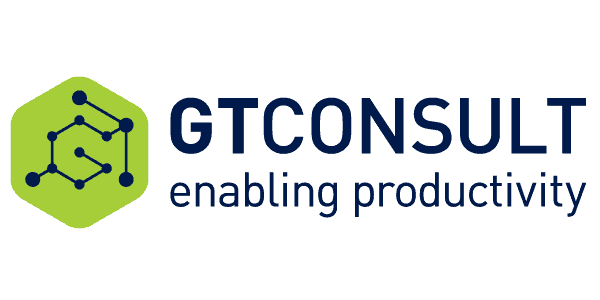To answer the question of when to use what applications or features within Office 365 most people start with the platform itself: the available apps and features themselves. And then by working through the functionality, and see where or what it can be used for.
This means they will look at features of each available app, and try to see what it can be used for. That also means when new apps are added, or lots of new features are added – as is the case with the roadmap for Teams and Skype – they need to assess again. Maybe having to re-arrange the architecture or governance.
Or they think of specific apps only in terms of features, and not really in work scenarios. So they might think of Skype as a chat and call app, and not so much as an app to make meetings more efficient.
Not very efficient.
At Silverside we take a different approach figuring out when to use what. We work from the platform towards scenarios, towards strategy, towards culture, in order to make the right choices about when to use what, and to align these choices.
For most organisations this might mean we need to work backwards from the platform to the culture, addressing also strategy and scenarios.
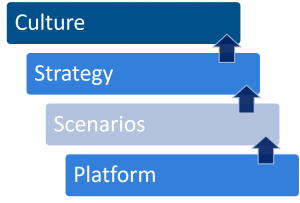
Work backwards from Platform to Company Culture
Start with the Culture
Platform
Office 365 is a platform which contains many apps. That is why so many people are confused about when to use what. A common approach is to figure out what applications can do, and then choose what we are going to do with it from a feature perspective. But a platform does not have purpose in itself. The platform supports a new digital workplace, which is based on productivity scenario’s. The scenarios should be relevant and directly contribute to an organisation’s strategy. The strategy needs to be fitting for the organisation’s culture.
Scenarios
An organisation’s business is not about using apps, but is about common work scenarios. To help employees learn when to use what a good approach is to re-think work using work scenarios. Work scenarios are common practices for groups to do their work. Apps are used to do the work, and are not an end in itself.
To get a better insight into apps and features for collaboration and communication within any organisation we can use 2 models: ‘Me-We-Key’ and the ‘Collaboration Framework’.
Me-We-Key
In order to specify further what collaboration and communication possibilities we will address Silverside uses the Me-We-Key model.
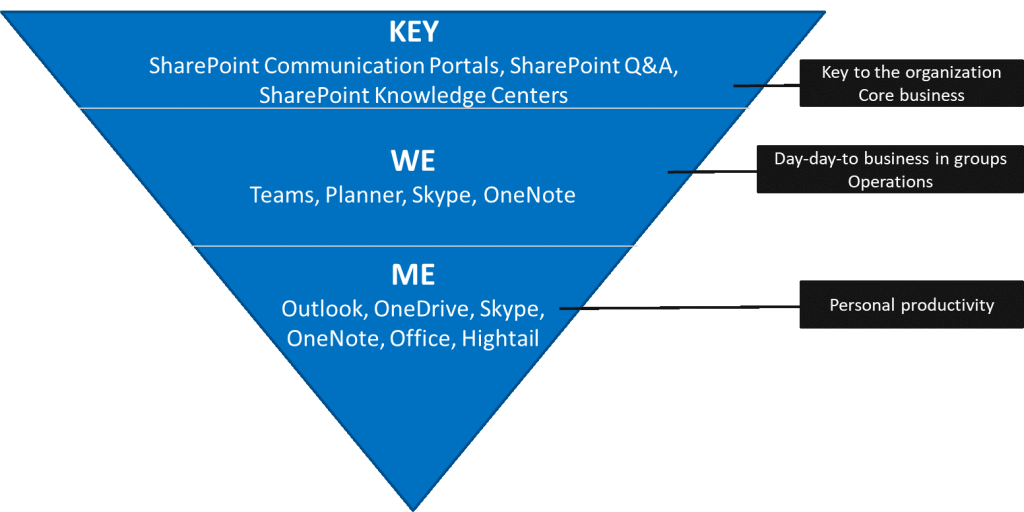
Me-We-Key model Silverside
This model specifies collaboration on 3 levels:
- Personal productivity (Me)
- Team productivity (We)
- Organization news, knowledge and processes (Key)
Key
This is what is key to the organization. What is valuable to all employees, and contributing to the core business. This is considered to need more structure and governance. Therefore, SharePoint sites and libraries with metadata, knowledge base wikis, etc. are very common.
We
The day-to-day operations and collaboration in different kind of groups (teams, project teams, interest groups) needs to be more agile. And therefore have less governance and more ease of use. This is where common tools such as email, shared drives, phones, chat and other shadow IT applications need to be shifted into smarter group collaboration tools.
Me
This is about your personal productivity. Like 1:1 communication, or ad-hoc (more private, not knowledge sharing) collaboration with both internal and external people. This is usually done through personal productivity apps.
When to use what: Impact versus Complexity
Most organisations start with building the KEY platform and applications. This requires a lot of development and time, with precise taxonomies and governance. The easiest to implement is the ME productivity, but provides the least impact on the organization’s strategy. The most complex part is the WE collaboration. This is where agile meets structure. Where personal preferences for doing things are inferior to the group. Were there needs to be alignment and agreement on how to do things. ‘We’ also has a lot of impact on the organization. Key take away here is: let’s first get people to collaborate!
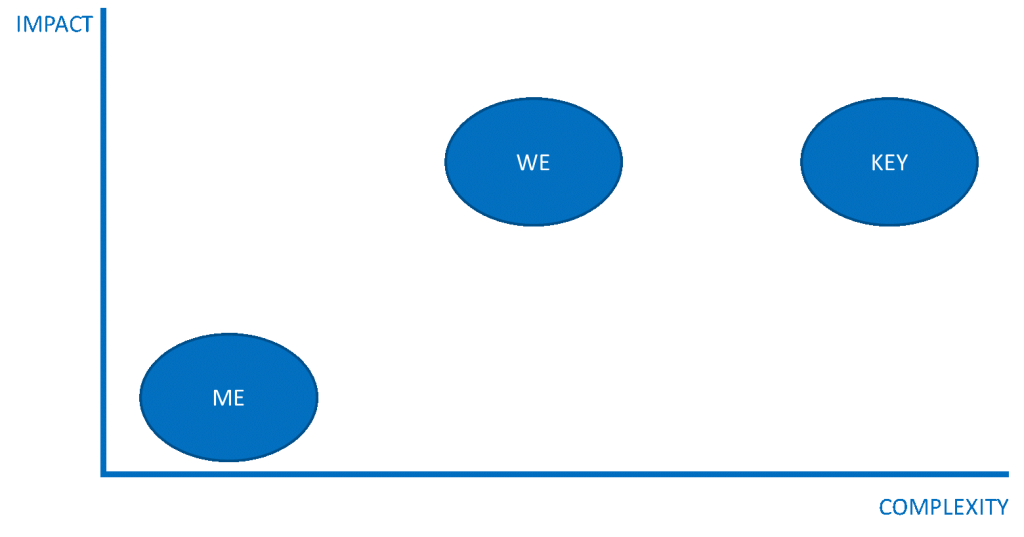
Impact versus Complexity
There are many forms of ME. The Collaboration Framework helps to define when to use what for different types of groups (ME).
Collaboration Framework
Silverside created the Collaboration Framework to give insight into when to use what, based on 2 axes:
- Vertical: Organization (Top) versus Employees (Bottom)
- Horizontal: Long term (Left) versus Short term (Right)
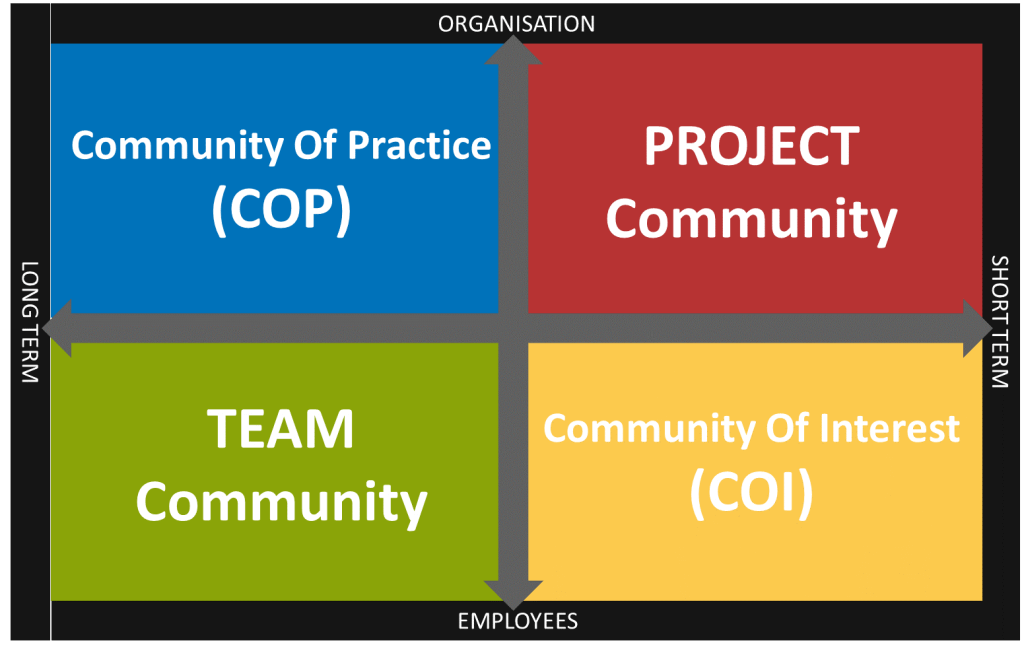
Silverside Collaboration Framework
- The COP (Community of Practice) is where the key content for the organization, available to all employees, provided with structure and a strict governance model of where, what, is said, and who can edit. It is usually a top-down approach (from the organization to all employees). Structure and target audience here does not change often (long-term). Typically an intranet, or quality management are positioned here. But also information from departments to the larger organization. This is where people go to find what is true, valid, or certified.
- Project is where key projects to the organization, important to all employees are located. Also with some formality and governance. They often contain members from different countries/ departments / business units, or even external people. They are however more short-term focused.
- Team is where the day-to-day operations within fixed groups (departments, smaller informal project teams) is taking place. These need to be more agile, and have very little governance or metadata. The groups of people are long-term, and the output of their work is daily operations. This is typically where teams or departments are working amongst themselves, and not accessible to all employees.
- COI (Community of Interest) is where very dynamic groups of people, usually from anywhere in the organization are working together to innovate. They brainstorm and share knowledge. Typically this is short-term, requires no governance, and is completely open / public (unless when it is about high confidential topics). Work sometimes will evolve to a project, and ultimately to a COP.
An example of how the mapping could be in Silveside’s Collaboration Framework:
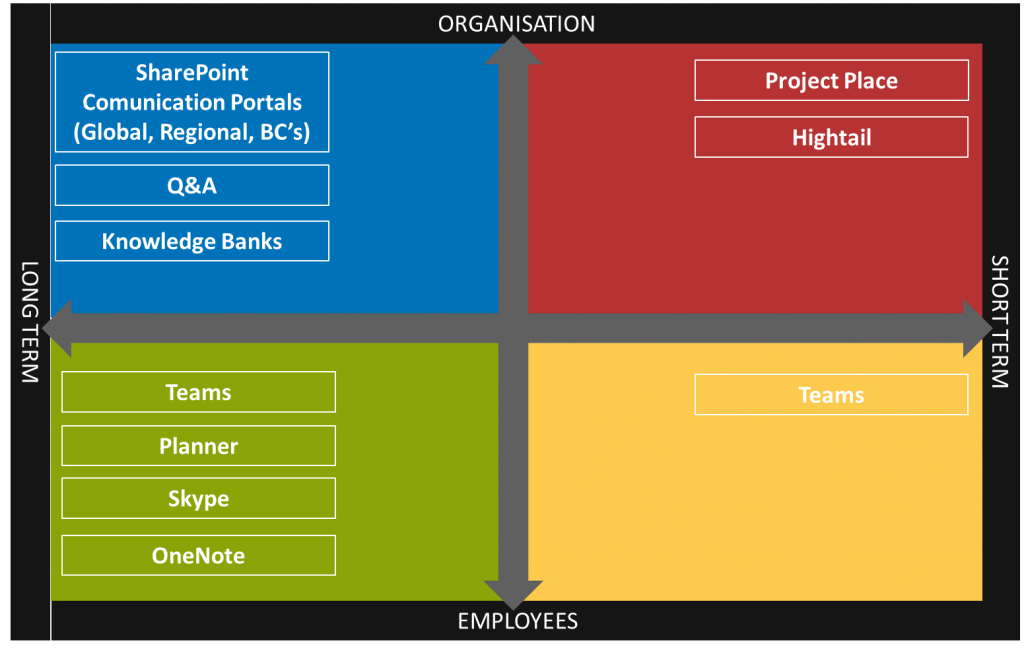
Mapping the Silveside’s Collaboration Framework
Strategy
The Collaboration & Communication platform is not a goal in itself, and neither are the work scenarios. How does the platform and the work scenarios contribute to the overall strategy of an organisation? How are all regional and business companies ’s strategies aligned? Do we all know why we are implementing the platform? Is the why the same for all regions?
To truly align the ’when to use what’ question to an orgasation’s strategy, discovering the why for implementation project is vital.
Culture
Ever heard of “Culture eats strategy for breakfast”? This is a phrase originated by Peter Drucker and made famous by Mark Fields, President at Ford, and is an absolute reality! Disconnecting the two is putting success at risk!
For a digital transformation the triumvirate scenarios – strategy – culture needs to be designed together. They need to be aligned, and enabling each other to create true change.
Scenarios, strategy, and culture is about a series of related choices about “Where are we going to work”, “How are we going to win and differentiate”, “What capabilities need to be in place to execute”, “What are the cultural imperatives to enable differentiation and execution”?
In order to inspire change we need to know the company culture at an organisation (or maybe cultures, when looked at different regions or business companies).
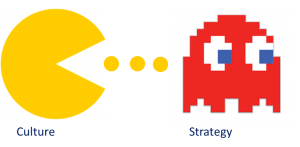
Culture eats Strategy for breakfast
Each company culture requires a different implementation and change approach.
Silverside uses the Company Culture Assessment (CCA) to discover your organization’s culture. From the online assessment a combined report of all individual employee entries (reports can be done on organizational, regional, business company, country, department, or even business roles). The outcome, plotted on the four standard company culture definitions, leads to specific advice for running an implementation project within the organization and tips for the required change management to reach maximum user adoption.
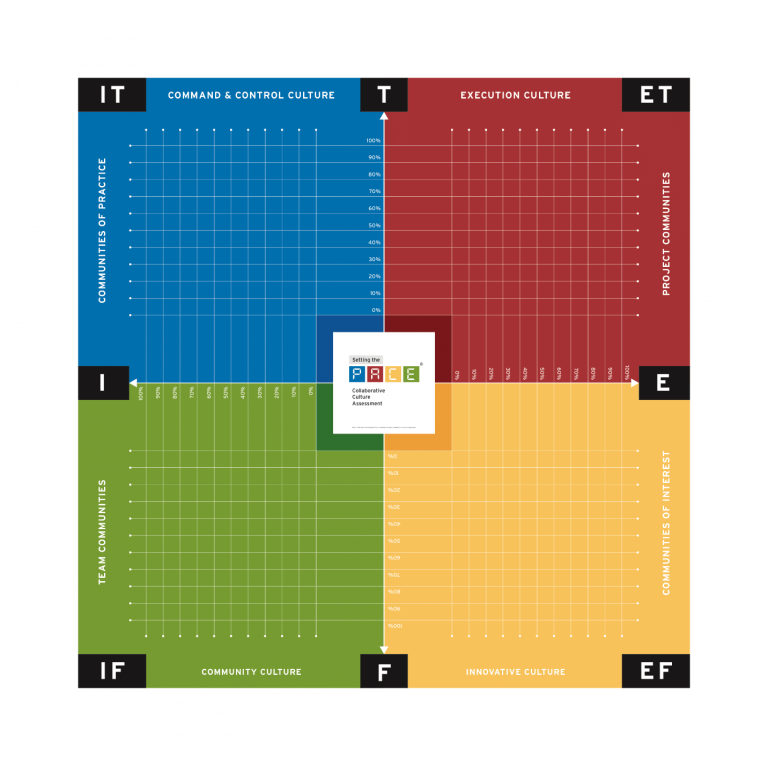
Silverside’s Collaborative Culture Assessment to discover your organisation’s collaborative culture
Do you want to find out when to use what in Office 365, aligned to your company culture? Then Try the Collaborative Culture Assessment for free.
About the Author:
Sasja Beerendonk is a senior Consultant at Silverside and is one of the most experienced end-user adoption consultants in Europe. She is recognized by Microsoft and IBM as a subject matter expert and speaks at international conferences on Social Collaboration, Change Management and User Adoption. She works closely with organisations such as Saxion University, the Dutch Tax Office, Kawasaki, SES, NN Group and Shanks.
Sasja is passionate about enabling a new way of working and motivating people to embrace technology to work smarter.
Outside of work, Sasja loves running and going on long walks with her dog. You may wake her up for spinach any time.
Reference:
Beerendonk, S (2018). When to use what in Office 365 with all the apps and features. Available at: https://www.silverside.com/when-to-use-what-office-365 (Accessed 24 April 2018)



